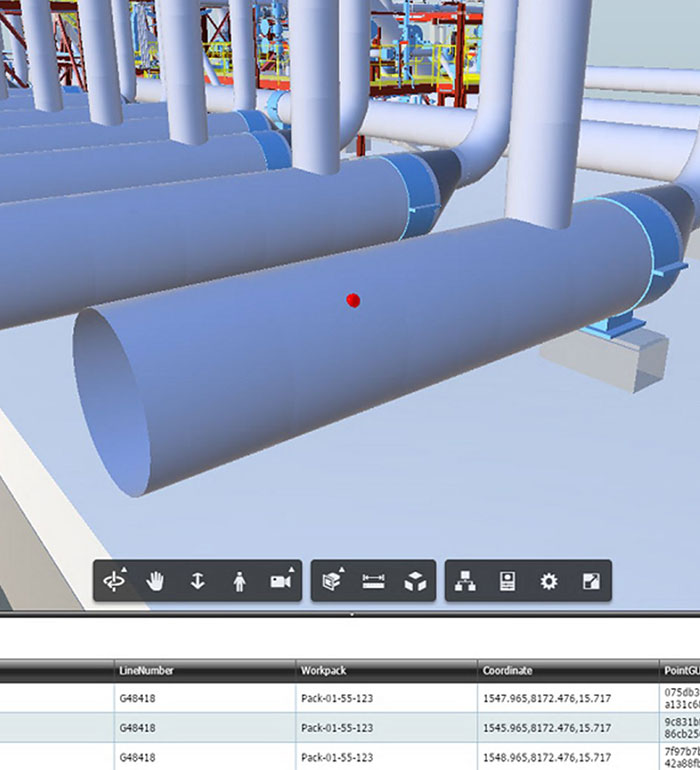
Harnessing the power of BIM
How modelling is able to transform completions and commissioning.
BIM (Building Information Modelling) is well entrenched in the early design phases of project life-cycles.
This is because most of the CAD world has successfully migrated to BIM through the efforts of companies such as Autodesk. However, later stages of the project lifecycle are still catching up and this is particularly the case across construction, commissioning and maintenance.
2017 presents a year of opportunity for later stages of projects to harness the power of BIM to deliver easily available project efficiencies during completions and commissioning. Examples include more efficient task management and more productive inspection campaigns.
What is BIM?
In simple terms, A BIM model is the most intelligent way to store all of the disparate information relating to a project so that it can be accessed by everyone who needs to interact with it throughout the project’s lifecycle. From concept to demolition, data is written once and used often.
Importantly, the data has a spatial component allowing it to be displayed in a 3-dimensional model. Any coordinate in the 3-dimensional design model can accrue meta-data over the life of a project which becomes available to anyone on the team in standard formats defined by the BIM specification.
All kinds of software from design programmes to work packaging tools can communicate with each other and share data using BIM protocols. BIM can benefit design, construction, commissioning and ongoing operation and management of facilities throughout the entire lifecycle of a plant or facility.
The formal definition has two components:
First, there’s the BIM model:
Building Information Modeling (BIM) is a digital representation of physical and functional characteristics of a facility.
Secondly, the model becomes a shared resource:
A BIM is a shared knowledge resource for information about a facility forming a reliable basis for decisions during its life-cycle.
The benefits of using BIM
Some key benefits of using BIM processes and technology include:
- Ensures more reliable design and structural engineering of facilities
- Increased control of projects, reducing costs and delivery times
- Better integration of project teams (engineering teams, procurement teams, construction teams, operations etc.) throughout the project lifecycle
Where are we now?
The architecture, engineering and construction (AEC) industry characterised by teams working in harmony (ideally). Interoperability is the ability of those teams (and the software they use) to communicate with each other. The BIM model is the ‘source of truth’ that all of the teams (and their software) rely on for information.
The unfortunate reality is that despite the industry’s best intentions, there are still two project life-cycle chasms or canyons that need to be bridged in the goal to deliver end-to-end project efficiencies.
BIM enabled Completions
The first canyon is between design and construction (‘The Execution Canyon’) where design teams complete the design before the constructor comes onboard. In the ideal scenario, the constructor should be engaged during the design process. This is what Integrated Project Delivery (IPD) recommends and IPD goes even further to contractualise the involvement of the constructor during design. BIM is ‘the glue’ that binds this collaborative relationship together.
We’ve written previously on how to implement Work packs and Work Packaging effectively in order to deliver a project on schedule and within budget. If BIM is being used, then it’s possible to access original design data and specifications when creating work packs during construction and execution. It’s also possible to generate inspection campaigns from this data and synchronise the results from inspection tests back to the BIM model.
[Inline-CTA url=”https://silverhorsetech.com/products/completions-connect/harness-the-power-of-bim/” button=”Read how we can help” title=”Completions Connect will deliver the potential of BIM on your project” imgid=”922″ imgurl=”https://silverhorsetech.com/wp-content/uploads/2017/04/knowledge-capital-agglomeration-1024×576.jpg”]
BIM enabled Continuous Handover
The second canyon is between commissioning and operations (‘The Handover Canyon’) where the project gets built and it might look finished, but the job is not actually complete because of the complexities of handing it over.
We’ve written previously about how continuous handover is the future of commissioning and completions. Why? Because it crosses the canyon from where commissioning is finished, but operations haven’t been brought up to speed yet. Where BIM is being used, the entire project history is naturally available to the operator. Traditional go-live becomes a non-event and the aggregated data in BIM delivers the ability to be predictive about maintenance. A huge bonus.
Summary
Ultimately, the most effective use of BIM is to enable the model to become the backbone of the project. The model will gather more and more information as the project passes through design, construction and into maintenance and everyone will have contributed to it. BIM provides a complete history of the project that brings integrity to the entire process. From concept to completion, all of the participant teams will have benefited from BIM and delivered efficiencies because of it.
